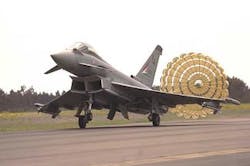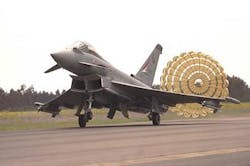Optoelectronics success on the battlefield drives defense spending
By Ben Ames
SAN JOSE, Calif. — Optoelectronics will be in even greater demand on the battlefield of tomorrow, boosting demand today for more advanced products. That is the conclusion of a new study from analyst Frost & Sullivan in San Jose.
Frost & Sullivan analysts back up their claims by citing initiatives such as the loitering-attack missile, built for the U.S. Army's Future Combat System, and the electro-optic (EO) early warning system on the future U.S. F-35 joint-strike fighter.
The outstanding performance of EO systems in recent conflicts has put them at the forefront of the "sensor-to-shoot" paradigm, the report states. They were critical to the success of military operations carried out in Kosovo, Afghanistan, and Iraq.
That success will drive demand for European-military airborne-EO systems as high as €800 million (about $976 million) by 2013, according to Frost & Sullivan.
Part of that growth will come from greater defense spending by European countries such as France, Germany, and the United Kingdom, as they strive to close the "technology gap" with the United States.
"Many European nations today consider EO systems as being a 'strategically important' technology, one that they cannot afford to depend on others to have," says Frost & Sullivan analyst consultant Rab Rattray.
At the same time, technology advances will leverage EO systems to reduce "sensor-to-shoot" time and create systems capable of identifying targets precisely over long ranges.
Specifically, European countries could begin using next-generation EO systems in fleet upgrades, such as the Tornado fighter jet, and in new build deliveries, such as the A400M military-transport plane, Eurofighter Typhoon jet fighter, and NH90 transport helicopter.
Overall, the largest EO markets will be applications in surveillance and reconnaissance as well as in missile systems, which together will record about 7 percent average annual growth until 2013. For more information, see www.aerospace.frost.com.
The unmanned aerial vehicles (UAV) market, though the smallest, is anticipated to be the fastest growing, with an average growth rate of about 18 percent in the next decade. A large part of this success can be attributed to UAVs' high performance compared to manned platforms, especially in reconnaissance roles.
Yet European suppliers may not be able to meet this growing demand.
"Most European countries today tend to view U.S. electro-optic systems as providing superior performance at competitive prices, and this is likely to inhibit growth of the market for European products," Rattray says.
U.S. companies currently dominate the European market for EO systems. The comparative advantage lies in the U.S.'s typically superior capability, competitive pricing, and large defense budget. Trailing Lockheed Martin and Raytheon are European companies such as Thales, Sagem, and BAE Systems, he says.
Together, European nations spend nearly 35 percent as much as the United States on defense, but their fragmented and redundant programs reduce their procurement efficiency. So E.U. officials are now trying to evolve a 10-year timeline to consolidate their defense procurement.
Already, U.S. contractors are relying on next-generation optics for new platforms.
Lockheed Martin and Raytheon will begin production in 2006 of the Non-Line-of-Sight — Launch System (NLOS-LS) Loitering Attack Missile (LAM), designed as an integral part of the Army's Future Combat System.
Developed with funding from the Defense Advanced Research Projects Agency (DARPA) under the name of NetFires, the 60-inch, 120-pound missile will loiter above an area for 30 minutes while searching for targets with a laser-radar (LADAR) seeker with automatic target recognition. Controllers will use a two-way data link to download images and retask it in flight, if necessary.
Another next-generation optical program is the Electro-Optical Distributed Aperture System (EO DAS) early risk-reduction system, designed to protect the F-35 joint-strike fighter from air-to-air missiles.
Developed by a Northrop Grumman team, the laser-based system will provide capabilities such as missile warning; navigation forward-looking infrared (FLIR) to provide imagery to the pilot's helmet-mounted display; and infrared search and track (IRST) capability. Multiple DAS sensors will provide a 360-degree spherical view around and through the aircraft, increasing the pilot's situational awareness for combat and for STOVL operations.

